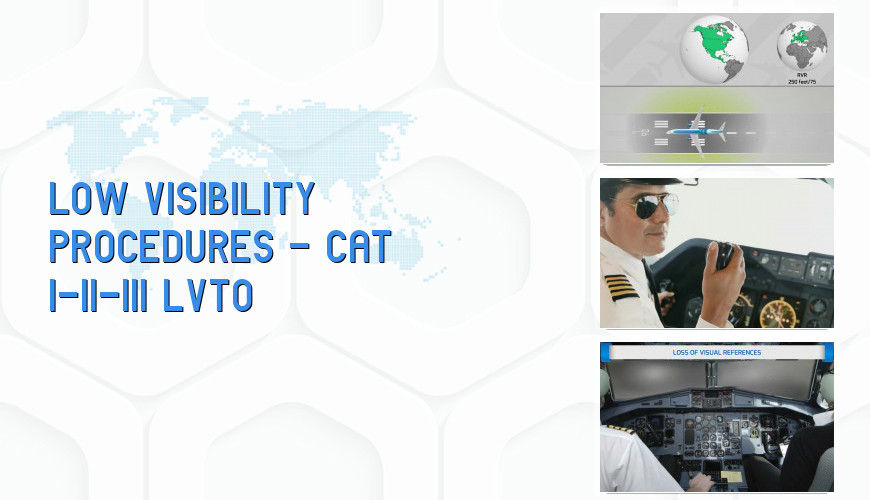
Course Information
This is an outstanding program for initial or recurrent training on the procedures used in low visibility conditions in line operations for both takeoffs and approaches/landings. This program meets or exceeds the requirements for all civil aviation authorities. The course carefully discusses the following information; General definitions and an overall review of All Weather Operations (AWO) and Low Visibility Procedures (LVP). Specific requirements for Low Visibility Takeoffs to include a discussion on the need for Runway Visual Range (RVR) and Slant Visual Range (SVR). Limitations and requirements for all types of low visibility approaches to include CAT II, Cat IIIA, Cat III B, Cat IIIC approaches and a discussion on Decision Height (DH) and Alert Height (AH). Pilots are required to be initially trained on this material prior to performing these types of low visibility procedures and also have a requirement for recurrent training on this information.
Content of the Course
| Slide | 104 | Duration | 00:46:40 | Exam | No |
|---|
- COURSE START
- INTRODUCTION
- DEFINITIONS
- All Weather Operations (AWO)
- Low Visibility Procedures (LVP)
- Low Visibility Take-Off (LVTO)
- Runway Visual Range (RVR)
- Svr (Slant Visual Range)
- Cat II Approach
- Cat III A Approach
- Cat III B Approach
- Cat III C Approach
- Decision Height
- Alert Height
- Operating Minima
- Aeroplane Categories
- Mabh
- Fail-Passive Automatic Landing System
- Fail-Operational Automatic Landing System
- Fail-Operational Hybrid Landing System
- Obstacle Clearance Height (OCH) and Obstacle Clearance Altitude (OCA)
- Obstacle Free Zone (OFZ)
- Ils Critical Area
- Ils Sensitive Area
- AIRPORT REQUIREMENTS
- Runway
- Terrain Restrictions
- Fixed Obstacles
- Runway Surface
- Airport Markings
- Approach Lighting
- Surface Movement
- Runway Lights
- Runway Visual Range
- ILS Categories
- AIRCRAFT EQUIPMENT REQUIREMENTS – MINIMUM EQUIPMENT
- FLIGHT CREW REQUIREMENTS
- GENERAL OPERATING RULES
- Category II Operation
- Category III Operation
- Cat III Operations With A Decision Height (DH)
- Cat III Operations With An Alert Height (AH)
- Cat III Operations With An Alert Height (AH) And A Decision Height (DH)
- Category III Operations With An Alert Height (AH) But No Decision Height
- Decision Region (Cat II and Cat III Operations)
- Decision Region Tracking Tolerances
- Function of The Visual Reference
- Operators Should Not Conduct Category II Or III Operations Unless
- Use of Landing Lights
- NORMAL OPERATING PROCEDURES – FLIGHT PREPARATION
- Aircraft Status
- Crew Qualification-Currency
- Weather Information
- Fuel Planning
- APPROACH PREPARATION – AIRCRAFT STATUS
- Weather Information
- Approach Limitations
- Atc Functions
- Seat Position
- Cat II or Cat III Crew Briefing
- Monıtored Approach Procedures
- Pm (Left-Seat Pilot)-Approaching DH:
- The Decision-Making Process
- In Cat III Operatıons With A DH
- In Cat III Without A DH
- Loss Of Visual References
- ABNORMAL PROCEDURES/SYSTEM FAILURES
- Downgrading Conditions
- Failures
- LIMITATIONS
- SUMMARY
- COURSE END

